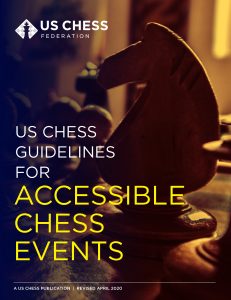
We are pleased to announce the release of the
US Chess Guidelines for Accessible Chess Events. This document was crafted by members of the US Chess Accessibility and Special Circumstances Committee:
- Janelle Losoff (committee chair)
- Martha Underwood (committee vice-chair)
- Stephanie Berk
- Judit Sztaray (former committee vice-chair)
- and several others who were generous with their time and expertise, including Executive Board liaison Ryan Velez.
From the Introduction:
"This Living Document is intended to communicate guidelines, best practices, and resources to help the Tournament Organizer (TO) and the Tournament Director (TD) create increasingly accessible, inclusive, and fair environments for individuals of all abilities in all types of events. It is also a guide for those TOs who seek to run events that are classified with the Accessible tournament label (A) in their Tournament Life Announcements (TLA). Players with disabilities may find this document helpful when asking for reasonable and fair accommodations and for understanding how those accommodations may be carried out.
These guidelines have been specifically developed by members of the Accessibility and Special Circumstances Committee (ASCC) and reviewed by the US Chess Executive Board. They reflect current best practices for holding Accessible chess tournaments which successfully include players who have chronic disabilities, temporary impairments, and/or specific circumstances that may require particular supports, adaptations, or accommodations in order to make chess play available for all players without fundamentally altering the nature of the chess tournaments.
An Accessible event is one that is safe, comfortable, dignified, and fair for players of all abilities. Beyond environmental adaptations required by the Americans with Disabilities Act (ADA), the event would facilitate and encourage people with disabilities to ask for reasonable accommodations, in a timely manner, in order to remove any barriers that may block inclusion. The responsibility of making these accommodations belongs to members of the chess society “at large,” in this case, the TO, TDs, and all other tournament staff and volunteers. (Goering)
If an event is labeled Accessible by the US Chess in a TLA or elsewhere, it is understood that the TO is providing a physically accessible venue, safe conditions, appropriate adaptations to equipment, and accommodations for players as needed. To achieve the optimal support plans for players with unique accommodation needs, in addition to consulting with the player, a player’s family members, caregivers, and coaches may be included in the development of creative, individualized strategies. The subsequent General Guidelines present suggestions for successfully facilitating any US Chess rated, non-rated, and sponsored event for all players. A large component of being an Accessible tournament is gathering information before the start of the tournament to help the TO run a smooth event.
On Language: Given that there are regional and personal variations in the acceptance of preferred terminology and etiquette (United Spinal Association), some of the terminology used in this document may be considered out of date or offensive by some. Accessibility language and word choices will be continually updated as the writers become aware of better and more up-to-date terms."
For more on Access-Enabled chess, please see our March
Chess Life special edition on accessibility. (You must be a current member and logged in to
access this digital edition.
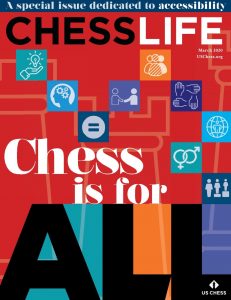
US Chess has a long history of supporting accessibility. Here are some examples that have appeared in
Chess Life through the decades:
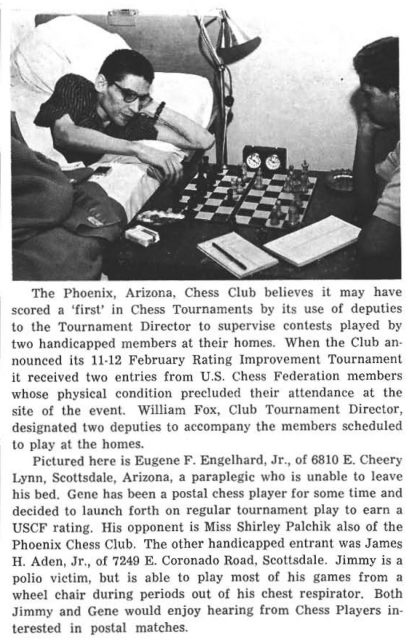 Chess Life
Chess Life, March 1961
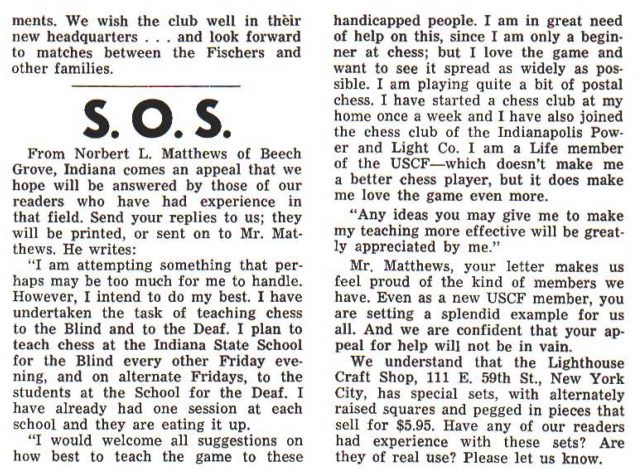 Chess Life
Chess Life, November 1961
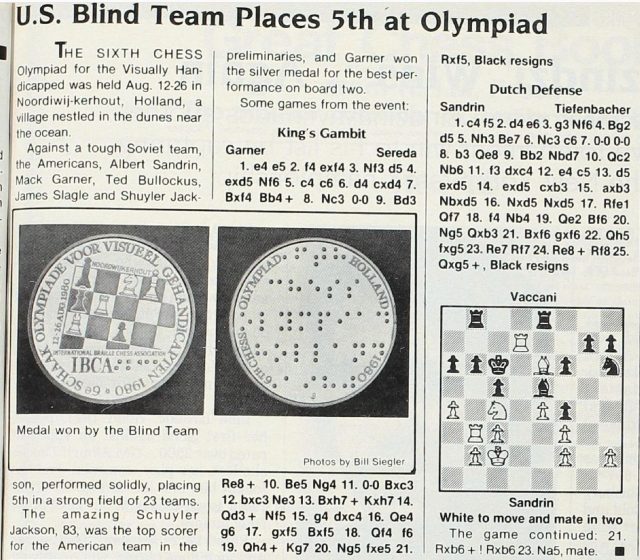 Chess Life
Chess Life, December 1980
And an example from a recent issue of
Chess Life Kids:
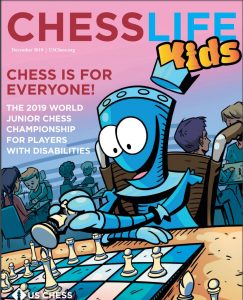
 We are pleased to announce the release of the US Chess Guidelines for Accessible Chess Events. This document was crafted by members of the US Chess Accessibility and Special Circumstances Committee:
We are pleased to announce the release of the US Chess Guidelines for Accessible Chess Events. This document was crafted by members of the US Chess Accessibility and Special Circumstances Committee:
 US Chess has a long history of supporting accessibility. Here are some examples that have appeared in Chess Life through the decades:
US Chess has a long history of supporting accessibility. Here are some examples that have appeared in Chess Life through the decades:
 Chess Life, March 1961
Chess Life, March 1961 Chess Life, November 1961
Chess Life, November 1961 Chess Life, December 1980
And an example from a recent issue of Chess Life Kids:
Chess Life, December 1980
And an example from a recent issue of Chess Life Kids:








